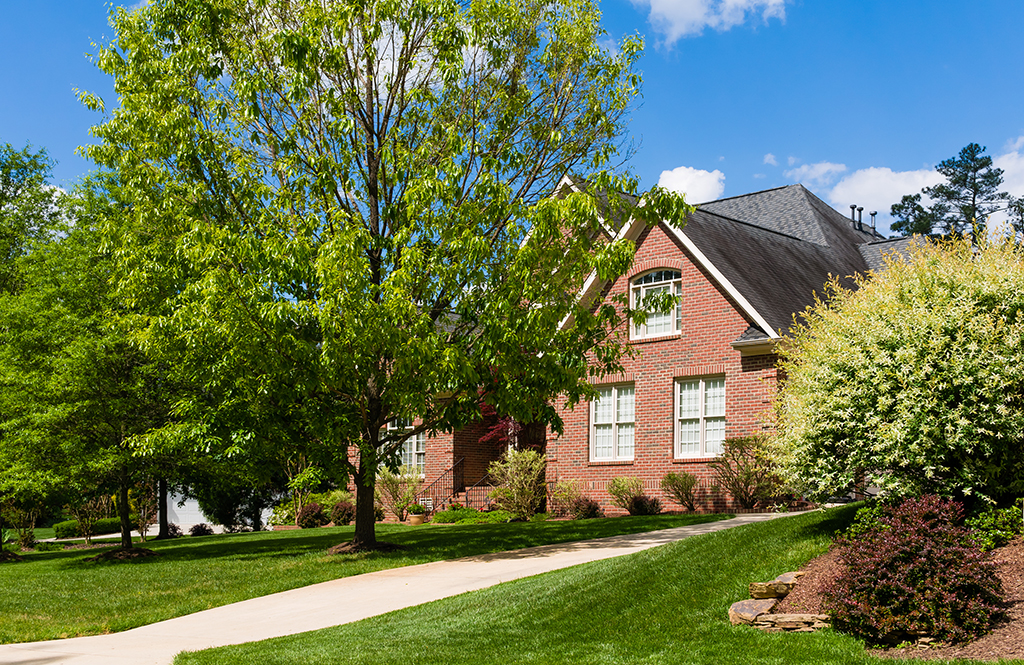Keeping Your Trees Healthy | Tips from Your Dallas, TX Tree Service
Photo By AlexLinck at Shutterstock
S&P Tree Service keeps trees healthy. Trained technicians have arboricultural education so they know the best way to plant and nurture specific tree species. They also identify illnesses and parasites that damage or destroy trees. Bacteria, insects, and fungus are the three main causes of tree disease. Common diseases vary by region. Tree service professionals in Dallas, TX, are familiar with local tree species and regional insects or microorganisms that could damage those trees.
Nuisance Tree Diseases
Powdery mildew is a fungal disease that thrives in hot, humid climates. Dallas, TX, experiences its fair share of heat and humidity every year. This disease usually does not permanently harm trees, but it is a nuisance and hinders tree growth.
Anthracnose is also caused by fungus and mostly infects oak, maple, and sycamore trees. It does not directly harm trees, but the fungal infection weakens the trees’ overall health. Poor health leaves trees vulnerable to other damage, diseases, and insects. Tree service options such as mulching, fertilizing, trimming, and other tasks help trees recover from anthracnose before a more severe disease sets in. Brown or tan spots on leaves are the most recognizable symptom of anthracnose.
Oak leaf blisters are another common fungal infection in Dallas, TX. It is caused by the fungus Taphrina caerulescens and mainly affects leaves. The infection forces leaf cells to divide abnormally and grow larger than they should. Light green depressions appear on the bottom of the tree’s leaves. The upper surface of the leaf develops yellow bulges, or blisters, above the depressions. Blisters slowly grow into each other and the leaves die as the disease progresses.
The light green depressions change to a darker color after the fungus releases spores. Oak leaf blisters are more of a nuisance than a threat to a tree’s survival. Routine tree service promotes vigorous growth and healthy trees that are resistant to oak leaf blisters.
Fatal Tree Diseases
Insects, such as Xylem-feeding leafhoppers and spittlebugs, transport bacteria that causes bacterial leaf scorch, or BLS. Unfortunately, there is no effective treatment available for this illness. BLS infiltrates the tissues in a tree that conduct water and nutrients.
BLS affects pin, red, shingle, white, and bur oak trees as well as elm, sycamore, mulberry, sweetgum, sugar maple, and red maple trees. The infection is almost always fatal, but trees are infected for 6 to 8 years before death. Property owners should consider contacting a tree service to remove trees infected with BLS so the bacteria does not spread to healthy trees.
Oak, pecan, elm, sycamore, and other types of hardwood trees are affected by hypoxylon canker infection. The infection is caused by a fungus and occurs most often during droughts. Trees infected with hypoxylon canker cannot be
saved, but the illness is preventable. Consult with a tree service professional to learn how to protect trees from this infection.
Fungal conk is a highly contagious fungal disease that causes rot. The fungus grows on old branches, bark, and cracks in trees. This disease can be treated if it is identified early. Regularly scheduled tree service is a good way to ensure tree diseases are caught early.
Fire blight is a bacterial disease. It affects pear, apple, and other fruit trees. The disease is dormant during winter and becomes active in spring. Fire blight is easily recognized when a tree’s blooms, branches, and foliage turn black.
Texas Oak Wilt
Oak wilt, also known as Texas Oak Wilt, is one of the most serious tree diseases in Dallas, TX, and across the United States. It has killed over 1 million trees throughout 76 counties in Central Texas. Oak wilt is caused by the fungus Ceratocystis fagacearum. It infects a tree’s vascular system and disrupts water conduction throughout the tree.
Every species of oak tree is vulnerable to oak wilt, although red oaks, such as the Spanish oak, Shumard oak, and blackjack oak, are extremely susceptible to the infection. White oaks are resistant and have better survival rates than red species.
The most recognizable symptom of oak wilt is called “veinal necrosis,” but it only occurs in the Live species of oak trees. The leaves develop yellow veins that turn dark brown. Leaves with brown veins fall from the tree and build up on the ground around the trunk. Live oak trees die in approximately 2 to 4 months, and trees to both sides of the original infected tree develop oak wilt a few weeks after the first tree’s death.
Oak wilt makes leaves on red and white oak trees turn pale green, then turn brown. The fungus starts on a single branch and rapidly spreads through the entire tree. A tree service professional in Dallas, TX, can confirm a diagnosis of oak wilt when symptoms are vague. Infected red and white oaks die within 2 to 4 weeks.
The infection spreads to new trees in two ways. The fungus forms spore-producing mats during spring. The mats have a sweet, fruity scent that attracts sap-feeding nitidulid beetles. Nitidulid beetles usually feed on tree sap. Trees exude sap when something causes a wound or hole in their bark.
A nitidulid beetle collects Oak Wilt spores as it feeds on the fungal mat. The insect can carry spores over long distances before it stops to feed on tree sap. Gaps in bark coverage that exude sap also provide an entry point for fungal spores to establish an infection in a new tree.
Oak wilt also spreads through root grafts. Oak trees tend to have large masses of interconnected root systems, so oak wilt spreads fast once it gains a foothold in any given area. Contact a professional tree service for assistance at the first signs of Texas oak wilt.


